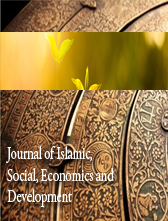HOW DO ISLAMIC AND CONVENTIONAL BANK CAPITAL STRUCTURES REACT TO LENDING: DOES POLITICAL TURMOIL MATTER?
Abstract
The pattern of lending growth has changed significantly during the global financial global. The deficit of bank lending consequently restricts the consumers and company’s ability to borrow. The availability of the credit supply in the market can affect the stability of the economic growth as the whole. This article is focused on two-fold. First, to examine the relationship between capital structures on bank lending behaviour. Second, to examine the interaction effect of political turmoil on the relationship between capital structure and bank lending behaviour of Islamic and conventional banks. Political turmoil is measured by corruption (CPI) and election year (ELY) while the capital structure is measured by Tier 1 capital and Tier 2 capital. The study employed a panel sample data that consists of 1392 bankyear observations from 18 dual banking countries from 2006 to 2017. The generalised Method of Moments (GMM) approach is used to cater to the endogeneity and heterogeneity problem. The results indicate a positive relationship between the capital structure of Islamic banks (IBs) and bank lending behaviour, suggesting that IBs serve the Tier 1 capital as a buffer. Still, conventional banks (CBs) use capital as an incentive device. Furthermore, corruption's interaction effect shows that a high level of core capital (Tier 1 capital) can weaken bank lending. It is also found that the integrity in the political standpoint in managing corruption to realising stability is vital in ensuring positive credit growth. In conclusion, this study contributes to the proof that corruption can harm the stability of the financial and economic system even though the institutions have a huge profit.













